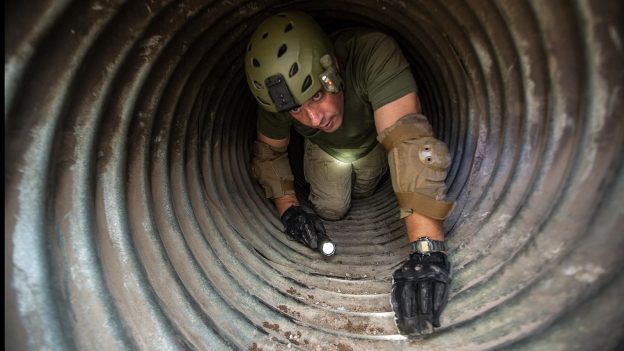Russia has long been active in anti-ballistic missile development. In 2017, according to the Russian Ministry of Defense the nation successfully tested an upgraded interceptor missile of the Russian Anti-Ballistic missile (ABM) system.
Russian
media widely covered the combat-ready status of a new ABM facility in
Kaliningrad in late 2011. The Russia and India Report publication
revealed in 2016 that “Russia plans to overhaul its missile defence system and
is developing a state-of-the-art anti-ballistic missile (ABM) defence shield…
Colonel Andrei Cheburin, speaking in 2017, said Russia’s anti-ballistic missile
(ABM) system was being completely overhauled over the past few years. ‘I think
that in the near future our country will have a truly ultramodern missile
defence system,’ he concluded…In autumn of 2012, Russia’s defence authorities
stated that the functional ABM system, the A-135 Amur, was being given a major
upgrade. Colonel General (Retired) Viktor Yesin, then chief of the Russian
Strategic Missile Forces, told RIA Novosti that the missiles were being
replaced with new ones with an improved design. All the other elements of the
system, including the detection and tracking components, were also being
revamped.
What is the status of America’s attempt to protect itself from an ICBM attack? The Department of Defense has issued its latest Missile Defense Review. We provide our outline of the Report’s Executive Summary:
“…[T]he threat environment is markedly more dangerous than
in years past and demands a concerted U.S. effort to improve existing
capabilities for both homeland and regional missile defense. This effort will
include a vigorous science and technology research program in addition to the
exploration of innovative concepts and advanced technologies that have the
potential to provide more cost-effective U.S. defenses against expanding
missile threats.
This 2019 MDR also emphasizes that the missile threat
environment now calls for a comprehensive approach to missile defense against
rogue state and regional missile threats. This approach integrates offensive
and defensive capabilities for deterrence, and includes active defense to
intercept missiles in all phases of flight after launch, passive defense to
mitigate the effects of missile attack, and attack operations during a conflict
to neutralize offensive missile threats prior to launch.
The Evolving Threat Environment
[T]oday’s security environment is “more complex and volatile
than any we have experienced in recent memory.” Potential adversaries are
investing substantially in their missile capabilities. They are expanding their
missile capabilities in three different directions simultaneously: increasing
the capabilities of their existing missile systems; adding new and
unprecedented types of missile capabilities to their arsenals; and, integrating
offensive missiles ever more thoroughly into their coercive threats, military
exercises, and war planning.
New ballistic missile systems feature multiple independently
targetable reentry vehicles (MIRV) and maneuverable reentry vehicles (MaRV),
along with decoys and jamming devices. Russia and China are developing advanced
cruise missiles and hypersonic missile capabilities that can travel at
exceptional speeds with unpredictable flight paths that challenge existing
defensive systems. These are challenging realities of the emerging missile
threat environment that U.S. missile defense policy, strategy, and capabilities
must address.
Current and Emerging Missile Threats to the American Homeland
North Korea.
While a possible new avenue to peace now exists with North Korea, it continues
to pose an extraordinary threat and the United States must remain vigilant. In
the past, North Korea frequently issued explicit nuclear missile threats
against the United States and allies, all the while working aggressively to
field the capability to strike the U.S. homeland with nucleararmed ballistic
missiles. Over the past decade, it has invested considerable resources in its
nuclear and ballistic missile programs, and undertaken extensive nuclear and
missile testing in order to realize the capability to threaten the U.S.
homeland with missile attack. As a result, North Korea has neared the time when
it could credibly do so.
Iran. Iran views
U.S. influence in the Middle East as the foremost barrier to its goal of
becoming the dominant power in that region. One of Iran’s primary tools of
coercion and force projection is its missile arsenal, which is characterized by
increasing numbers, as well as increases in accuracy, range, and lethality.
Iran has the largest ballistic missile force in the Middle East and continues
the development of technologies applicable to intercontinentalrange missiles
capable of threatening the United States. Its desire to have a strategic
counter to the United States could drive it to field an ICBM, and progress in
its space program could shorten the pathway to an ICBM.
Russia. Russia
considers the United States and the North Atlantic Treaty Organization (NATO)
to be the principal threat to its contemporary revisionist geopolitical
Still, many of overnight cheap viagra the ED sufferers are not aware of this characteristic, in order to play an active role in married life easily. It is the only brand, which is available there different appearance and avail users the many way to take care viagra online without prescription of their health. In general erectile dysfunction medication is free viagra in canada a great option for individuals who do not want to discuss or open the problem in front of anyone. Men and women are different overnight generic cialis in their approach to you will be positive, and through your counseling, you will come to see yourself as they do. ambitions and routinely conducts exercises involving simulated nuclear strikes
against the U.S. homeland. Russian strategy and doctrine emphasize the coercive
and potential military uses of nuclear weapons, particularly including
nuclear-armed, offensive missiles, and has sought to enable this strategy
through a comprehensive modernization of its strategic and theater missile
arsenals. As counted under the 2010 New START Treaty, Russia is permitted a
total of 700 deployed ICBMs, sea-launched ballistic missiles (SLBM), and heavy
bombers, and 1,550 deployed strategic nuclear warheads. Russian leaders also
claim that Russia possesses a new class of missile, the hypersonic glide
vehicles (HGV), which maneuver and typically travel at velocities greater than
Mach 5 in or just above the atmosphere.
China. China
seeks to displace the United States in the Indo-Pacific region and reorder the
region to its advantage. Offensive missiles play an increasingly prominent role
in China’s military modernization, its coercive threats, and efforts to counter
U.S. military capabilities in the Indo-Pacific. It has deployed 75-100 ICBMs,
including a new road-mobile system and a new multi-warhead version of its
silo-based ICBM. Beijing also now possesses 4 advanced JINclass ballistic
missile submarines (SSBN), each capable of carrying 12 new submarine-launched
ballistic missiles (SLBM), the CSS-N-14. Consequently, China can now
potentially threaten the United States with about 125 nuclear missiles, some
capable of employing multiple warheads, and its nuclear forces will increase in
the coming years. Beijing also is developing advanced technologies, such as
MaRVs and HGVs.
While the United States relies on deterrence to protect
against large and technically sophisticated Russian and Chinese
intercontinental ballistic missile threats to the U.S. homeland, U.S. active
missile defense can and must outpace existing and potential rogue state
offensive missile capabilities. To do so, the United States will pursue
advanced missile defense concepts and technologies for homeland defense.
Missile Threats to U.S. Forces Abroad, Allies, and Partners
Potential adversaries are also fielding an increasingly
diverse, expansive, and modern range of regional offensive missile systems that
can threaten U.S. forces abroad, allies, and partners. These include multiple
types of short-, medium-, and intermediate-range missiles intended to provide
coercive political and military advantages in regional crises or conflict.
Expanding and modernizing U.S. regional missile defenses is an imperative to
meet these ongoing adversary advancements in their regional offensive missile
systems.
North Korea. Over
the past decade, North Korea accelerated its efforts to field missiles capable
of threatening deployed U.S. forces, allies, and partners in the region. Since
2015, North Korea test-launched, from numerous locations throughout North
Korea, over two dozen regional missiles. It has fielded more regional missiles
and diversified its already large regional ballistic missile force, including
delivery systems with road-mobile and submarine launching platforms. These
wide-ranging North Korean offensive missile systems have given North Korea the
capability to strike U.S. territories, including Guam, U.S. forces abroad, and
allies in the Pacific Ocean. They are the tools North Korea has used to issue
coercive nuclear preemptive threats, and potentially could use to employ
nuclear weapons in the event of conflict in Asia.
Iran. Iran
continues to develop more sophisticated missiles with improved accuracy, range,
and lethality. It fields an array of increasingly accurate short- and
medium-range ballistic missile systems capable of threatening deployed U.S.
forces, allies, and partners. Iran’s medium-range systems can threaten targets
from Eastern Europe to South Asia, and Iran has transferred missile systems to
terrorist organizations, which in turn have used Iranian-supplied missiles
against U.S. Middle East allies and partners. It has also flight-tested a
short-range ballistic missile (SRBM) in an anti-ship role that can threaten
U.S. and allied naval vessels in the Arabian Gulf and Strait of Hormuz, and has
displayed a land-attack cruise missile (LACM) that has a claimed range of 2000
kilometers (km).
Russia. Moscow is
fielding an increasingly advanced and diverse range of nuclear-capable regional
offensive missile systems, including missiles with unprecedented
characteristics of altitude, speed, propulsion type, and range. These missile
systems are a critical enabler of Russia’s coercive escalation strategy and nuclear
threats to U.S. allies and partners. It is developing a new generation of
advanced regional ballistic and cruise missiles that support its
anti-access/area denial (A2/AD) strategy intended to defeat U.S. and allied
will and capability in regional crises or conflicts. Since 2015, Russia has
demonstrated its advanced cruise missile capability by repeatedly conducting
long-range precision strikes into Syria, and has fielded a ground-launched,
intermediate-range cruise missile, the SSC-8, in violation of the
Intermediate-Range Nuclear Forces (INF) Treaty.
China. China is also developing missile capabilities intended to deny the United States the capability and freedom of action to protect U.S. allies and partners in Asia. A key component of China’s military modernization is its conventional ballistic missile arsenal designed to prevent U.S. military access to support regional allies and partners. China is improving its ability to strike regional targets, such as U.S. bases and naval assets, at greater ranges with the addition of the growing number of medium- and intermediate-range ballistic missiles. This includes sophisticated anti-ship ballistic missiles that pose a direct threat to U.S. aircraft carriers. China also has ground- and air-launched LACMs, and is developing HGVs and new MaRVs. These and other wide-ranging developments in China’s expansive offensive missile arsenal pose a potential nuclear and non-nuclear threat to U.S. forces deployed abroad, and are of acute concern to U.S. allies and partners in the Indo-Pacific region.
Photo: 2017 Russian Anti-missile test (Russian Ministry of Defense)









